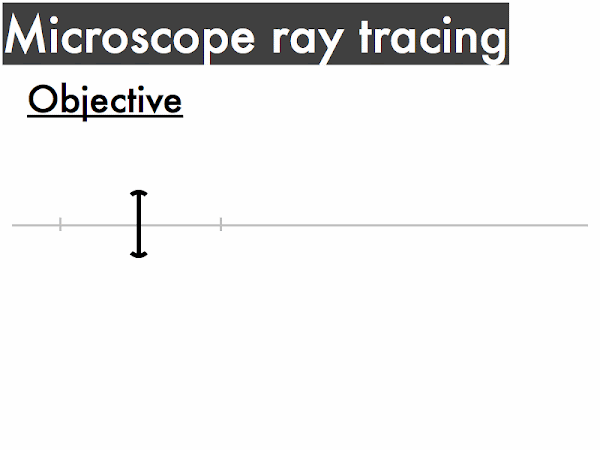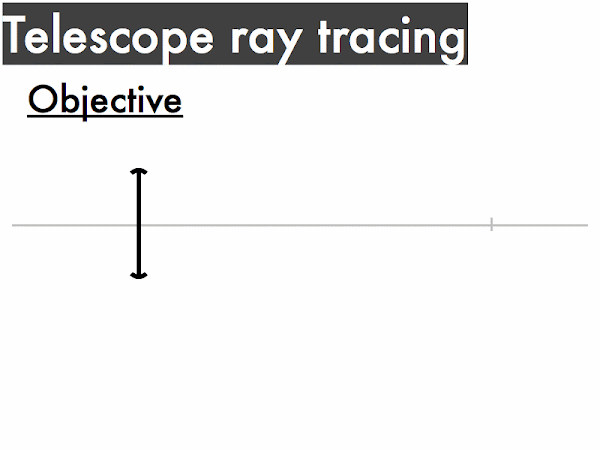Cuesta College, San Luis Obispo, CA
Students have a bi-weekly online reading assignment (hosted by SurveyMonkey.com), where they answer questions based on reading their textbook, material covered in previous lectures, opinion questions, and/or asking (anonymous) questions or making (anonymous) comments. Full credit is given for completing the online reading assignment before next week's lecture, regardless if whether their answers are correct/incorrect. Selected results/questions/comments are addressed by the instructor at the start of the following lecture.
The following questions were asked on reading textbook chapters and previewing presentations on optical instruments and interference.

Selected/edited responses are given below.
Describe what you understand from the assigned textbook reading or presentation preview. Your description (2-3 sentences) should specifically demonstrate your level of understanding.
"The objective lens is nearest to the object and the eyepiece (or magnifying glass) is nearest to the eye for both the microscope and telescope."
"For a two-lens model of a microscope and a telescope, the object uses light from the object to create a real image that will become the object for the eye piece. For a microscope, since the object is close to the focal point, the image produced is highly enlarged. On a telescope, however, the object is going to be very distant and the ray tracing becomes parallel before it is focused by the objective."
"The similarities between microscopes and telescopes: they both have tubes that hold two lenses apart from each other and have an objective lens in the front and an eyepiece in the back. The ray tracings are different, however."
"The first image/second object produced by the objective for both a microscope and telescope is near the focal point of the eyepiece. Because it is near the focal point of the eyepiece, the light transmitted through the eyepiece is nearly parallel. The final image produced is enlarged, virtual and near infinity."
"Both a microscope and telescope consists of an objective and an eyepiece. Angular magnification of a compound microscope: the M is greater when fo and fe are as short as possible and when the distance between lenses, L, is large. angular magnification for telescope: the objective should have a long focal length and the eyepiece a short focal length."
Describe what you found confusing from the assigned textbook reading or presentation preview. Your description (2-3 sentences) should specifically identify the concept(s) that you do not understand.
"I reviewed the lecture, but I still do not feel like I understand the difference between a microscope and telescope. I know the first object is a different distance from the objective and the image it creates is around the focal point of the eyepiece. But what are the lenses (or focal points?) doing differently?"
"I am not sure what type of focal lengths you would want for an objective lens for a microscope or telescope. I am not sure type of focal lengths I would want for the microscope and the telescope."
"The differences between the telescope and microscope magnification equations. Possibly it is due to the objects being placed at different focal lengths but I am not sure. To me it seems like both instruments essentially do the same thing so their magnification equations shouldn't be different."
"The ray tracings for the telescope and microscope. Also how the ray tracings for both are so similar."
"Why the formulas for the magnification equations of microscopes and telescopes differ."
"I'm a little confused because now we have two objects and two lenses involved in our ray tracings."
"When I read the readings I will know what I know, but I will also know what I do not know and that will go here."
"I really struggle with these sections and am not 100% sure what I'm confused on. Talking it out with examples in class always helps, but working on this section at home is a struggle for me."
"Nothing really too confusing."
Identify the type for each of these lenses. (Only correct responses shown.)
Microscope objective: converging [85%]
Microscope eyepiece: converging [64%]
Telescope objective: converging [85%]
Telescope eyepiece: converging [67%]


Identify the ray tracing for each of these lenses. (Only correct responses shown.)
Microscope objective: ray tracing 2 [46%]
Microscope eyepiece: ray tracing 3 (or 4) [41%]
Telescope objective: ray tracing 3 (reversed) [13%]
Telescope eyepiece: ray tracing 3 (or 4) [38%]

A (compound) microscope should have a __________ focal length objective lens and a ___________ focal length eyepiece lens in order to maximize its angular magnification.
short; short. ********************** [22] short; long. ****** [6] long; short. *** [3] long; long. [0] (Unsure/lost/guessing/help!) ******** [8]
A telescope should have a __________ focal length objective lens and a ___________ focal length eyepiece lens in order to maximize its angular magnification.
short; short. * [1] short; long. *** [3] long; short. ********************** [22] long; long. ****** [6] (Unsure/lost/guessing/help!) ******* [7]
Ask the instructor an anonymous question, or make a comment. Selected questions/comments may be discussed in class.
"Could you review a little more about the angular magnification in class? I am still struggling with that a little bit."
"No questions today but I am still a little confused on the magnification equations for both instruments."
"What does it mean when an image 'goes out into infinity?'"
No comments:
Post a Comment